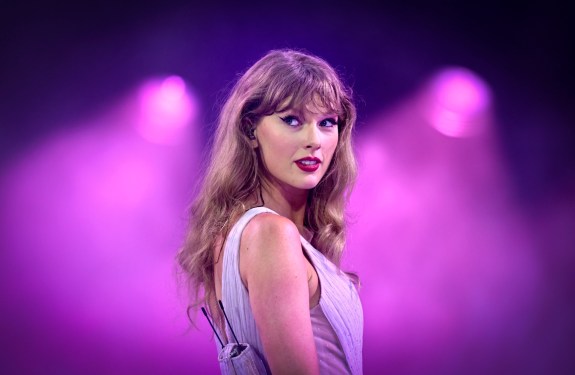For the release of her twelfth album, “The Life of a Showgirl,” Taylor Swift sent fans on an online scavenger hunt this weekend. The hunt began by searching for her name on Google. A search for the singer yielded a cryptic message that read, “12 cities, 12 doors, 1 video to unlock.” Fans had to figure out the locations of these doors, physically find them, and scan a QR code. This action surfaced twelve unique videos containing the clues needed to solve the puzzle.
When fans Googled the correct phrase, another orange door appeared. Fans had to collectively “knock” on this door by clicking it twelve million times. Once that goal was met, the door opened to reveal a lyric video for the song “The Fate of Ophelia.” This video featured its own orange door progress bar on YouTube. YouTube had secured the exclusive for this video, as well as the lyric videos for the remaining songs on the new album.
Google initially announced the scavenger hunt in a video on Instagram. The video starts with an aerial view of Earth, then zooms in on a hilly, bejeweled landscape until an orange door comes into view, overlaid with a Google search bar.
While her fans, known as Swifties, typically love a puzzle, some were unsettled by the twelve clue-containing videos. They expressed concern that the clips looked AI-generated. Instead of searching for clues to unveil the new lyric video as intended, some fans began scrutinizing the clips for signs that the scenes were synthetic. While some clips do appear computer-generated, it remains unclear if they were made using AI, or to what extent.
It would be a logical assumption that these videos were generated using Google’s own AI products. As OpenAI showcases its new Sora 2 video generator, this collaboration with Taylor Swift would be a perfect opportunity for Google to demonstrate the capabilities of its Veo 3 model to millions of fans. Google did not respond to a request for comment on how the videos were made or if Swift and Google collaborated using Google’s AI technology. However, it is worth noting that Swift’s team and Google have partnered for similar promotional activities in the past.
The use of AI in creative works is a sensitive subject. Some artists believe these tools can be helpful, while others have protested how large language models are trained on their work without consent. This practice effectively uses artists’ own creations to build technology that could threaten their livelihoods.
Taylor Swift herself has spoken out about the dangers of AI. This occurred after President Donald Trump shared an AI-generated image of her showing support for his campaign last year. That incident prompted her to post an endorsement for former Vice President Kamala Harris, who ran against Trump. She wrote on Instagram that the AI-generated endorsement conjured her fears about AI and misinformation, leading her to be transparent about her actual voting plans.
The controversy around Swift’s possible use of AI is amplified by her immense stature in the music industry. While AI may appeal to some artists as a way to reduce costs, the billionaire musician has every possible resource at her disposal to bring fantastical scenes to life without synthetic assistance.

